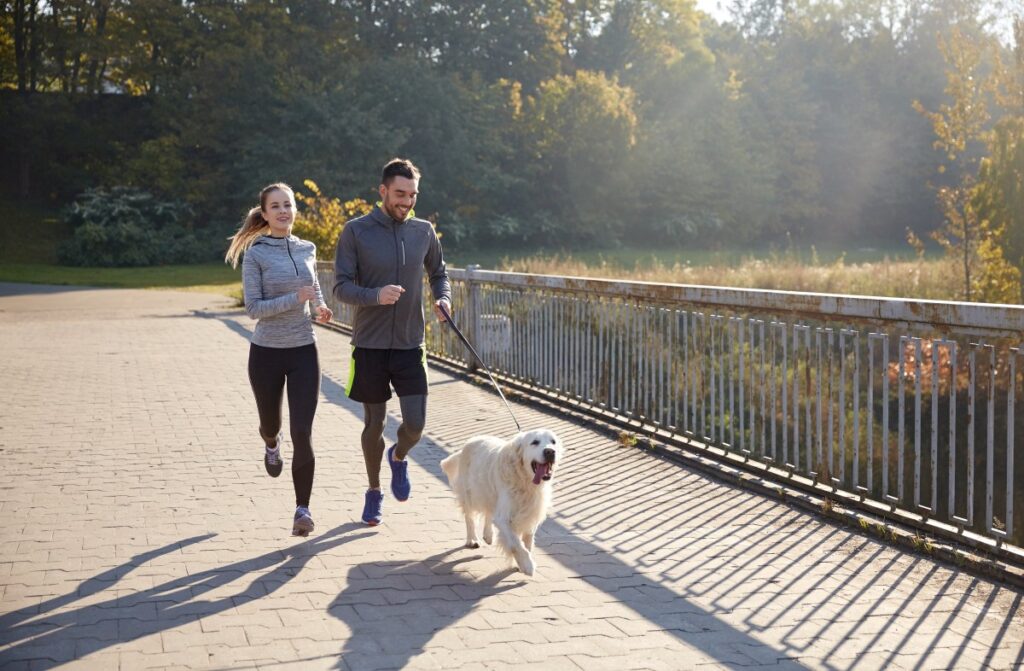Dogs are much like people—they come in all shapes and sizes, each with their own unique personality. And while every breed has its charm, not all of them fit seamlessly into every household. For families who are constantly on the move, high-energy breeds may be the perfect match.
Research shows that dog owners tend to walk more, participate in more recreational physical activity and are significantly more likely to meet the recommended 150 minutes of moderate-intensity exercise per week for American adults. Dog ownership has also been linked to a lower long-term risk of death, thanks in part to better cardiovascular health.
To find out which energetic breeds thrive best in active homes, Newsweek spoke with Dr. Julie Hunt, a veterinarian at Embrace Pet Insurance, who shared her insights on several top-performing athletic breeds.
Brittany Spaniel
Hunt described Brittany spaniels as “a medium-sized dog originally bred and trained for bird hunting,” adding that they are “very active and intelligent dogs” with a “very high requirement for exercise.”
According to her, these sporting dogs flourish when surrounded by active people who can keep up with their boundless enthusiasm. “Failing to give them enough exercise can result in some behavioral problems,” she said, though these issues can be prevented by giving them ample physical and mental outlets.
Brittanys are known to be friendly with adults, children and other pets, and their intelligence makes them “easily trained with positive training methods.” They often excel in obedience or competitive sporting events. Their flowing coat does require grooming—especially after muddy adventures.
Dalmatian
Dalmatians are another strong fit for bustling families. Hunt called them “a medium to large breed dog that is very high in energy and loves a busy lifestyle.”
They are famously loyal, but that devotion can also make them prone to separation anxiety if left alone too long. With sufficient stimulation and positive training, however, they become excellent housemates—particularly in homes with multiple family members who love to play or take part in outdoor activities.
“They have a lot of stamina and a smooth, effortless running gait,” Hunt noted, making them ideal partners for running and hiking.
Weimaraner
Weimaraner’s are built for adventure. Known for their stamina and athleticism, they require extensive daily exercise and thrive when included in all their owner’s activities.
If properly socialized during puppyhood, they tend to be warm and social with people and other animals.
Hunt said: “They are intelligent and highly trainable, making them overall an excellent choice for a companion.”
One of America’s most beloved breeds, the Labrador retriever is popular for good reason.
“They are friendly, intelligent, and outgoing,” Hunt told Newsweek.
Labs are especially energetic when young and require plenty of daily activity, making them well-suited to families who spend a lot of time outdoors. They also enjoy exploring new environments and meeting new people—a natural match for active owners who are frequently on the move.
Boxer
Boxers bring boundless enthusiasm to every household. Hunt described them as “a large breed, high-energy dog that requires a lot of daily exercise,” praising their friendliness, loyalty and trainability.
They love tagging along on outings and meeting new people. However, she noted one important caveat: Boxers have a brachycephalic (short-nosed) facial structure, which makes them more prone to heat stress. Families who live in hotter climates or enjoy long summer hikes should take extra precautions.
References
Westgarth, Carri, et al. “Dog Owners Are More Likely to Meet Physical Activity Guidelines than People without a Dog: An Investigation of the Association between Dog Ownership and Physical Activity Levels in a UK Community.” Scientific Reports, vol. 9, no. 1, Apr. 2019, p. 5704. www.nature.com, https://doi.org/10.1038/s41598-019-41254-6.
Kramer, Caroline K., et al. “Dog Ownership and Survival: A Systematic Review and Meta-Analysis.” Circulation: Cardiovascular Quality and Outcomes, vol. 12, no. 10, Oct. 2019, p. e005554. DOI.org (Crossref), https://doi.org/10.1161/CIRCOUTCOMES.119.005554.
Read the full article here


